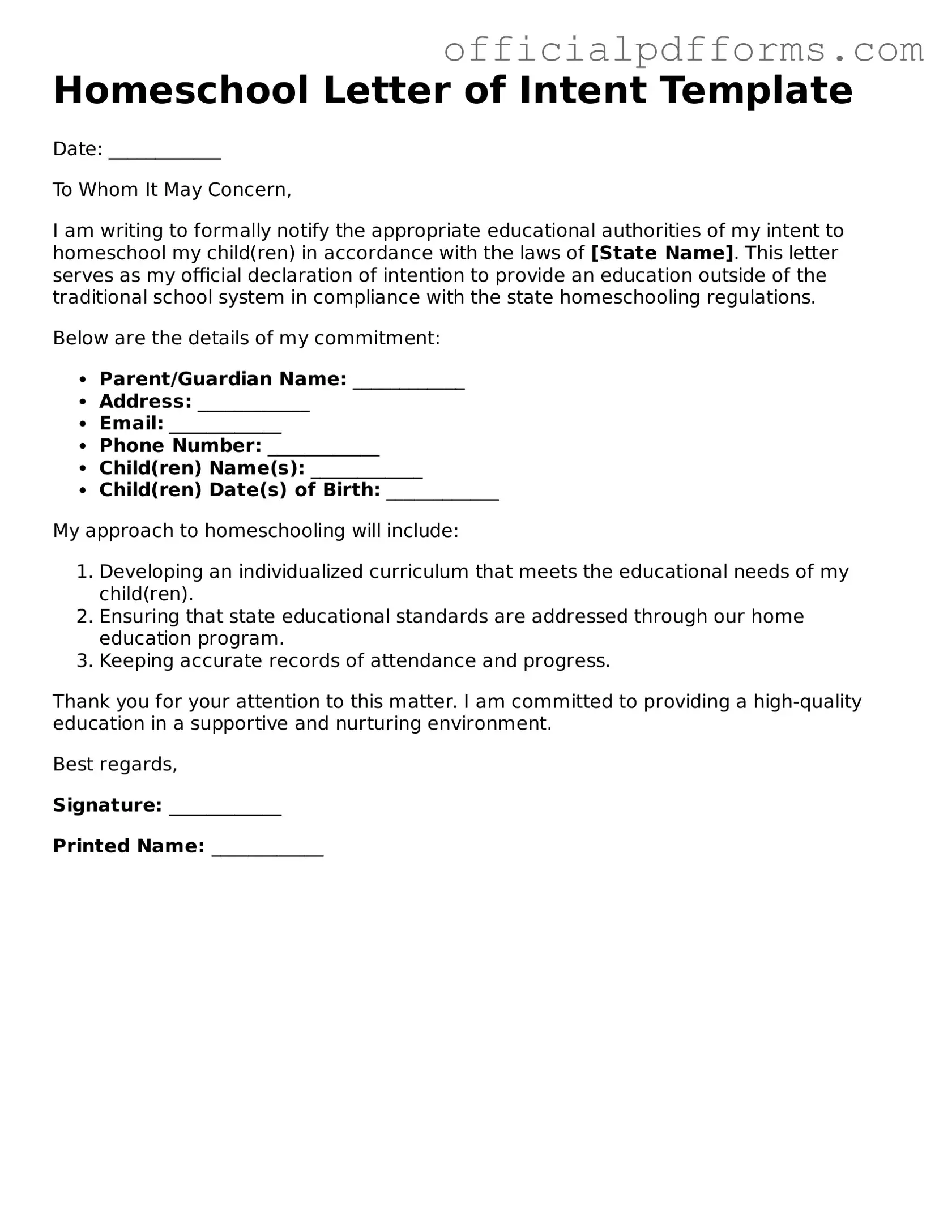What is a Homeschool Letter of Intent?
A Homeschool Letter of Intent is a formal document that parents or guardians submit to their local school district to notify them of their decision to homeschool their child. This letter typically outlines the parents' intent to provide education at home, ensuring compliance with state regulations. It serves as an official record of the family's choice and can be essential for legal and administrative purposes.
Who needs to submit a Homeschool Letter of Intent?
Any parent or guardian who wishes to homeschool their child must submit a Homeschool Letter of Intent. This requirement applies to families with children of compulsory school age, which varies by state. It is crucial to check local regulations, as some states may have specific guidelines regarding the submission process and deadlines.
When should the Homeschool Letter of Intent be submitted?
The timing for submitting the Homeschool Letter of Intent can vary by state. Generally, it should be submitted at the beginning of the school year or when a family decides to transition from public or private school to homeschooling. Some states require submission before the school year starts, while others may allow submission at any point during the year. Always verify local laws to ensure compliance.
A well-crafted Homeschool Letter of Intent usually includes:
-
The name and address of the parent or guardian
-
The name and age of the child or children being homeschooled
-
A statement of intent to homeschool
-
The educational approach or curriculum planned for the child
-
Any other information required by the local school district
Including this information helps to provide clarity and ensures that the letter meets local requirements.
While there is no universally mandated format for the Homeschool Letter of Intent, it should be clear and concise. Many families choose to format it as a formal letter, including a date, salutation, and closing. Some states may provide a template or specific guidelines, so it is advisable to consult local education authorities for any recommendations.
What happens after submitting the Homeschool Letter of Intent?
After submitting the Homeschool Letter of Intent, parents should expect to receive confirmation from the school district. This confirmation may vary in form and content, depending on local policies. It is essential to keep a copy of the submitted letter and any correspondence for personal records. Additionally, parents should remain informed about any ongoing requirements, such as progress reports or assessments, that may be mandated by their state.
Can the Homeschool Letter of Intent be revoked or changed?
Yes, the Homeschool Letter of Intent can be revoked or amended. If a family decides to return their child to public or private school, they should notify the school district accordingly. Similarly, if there are changes in the educational approach or curriculum, updating the letter may be necessary. Always refer to local regulations to ensure that any changes comply with state requirements.
